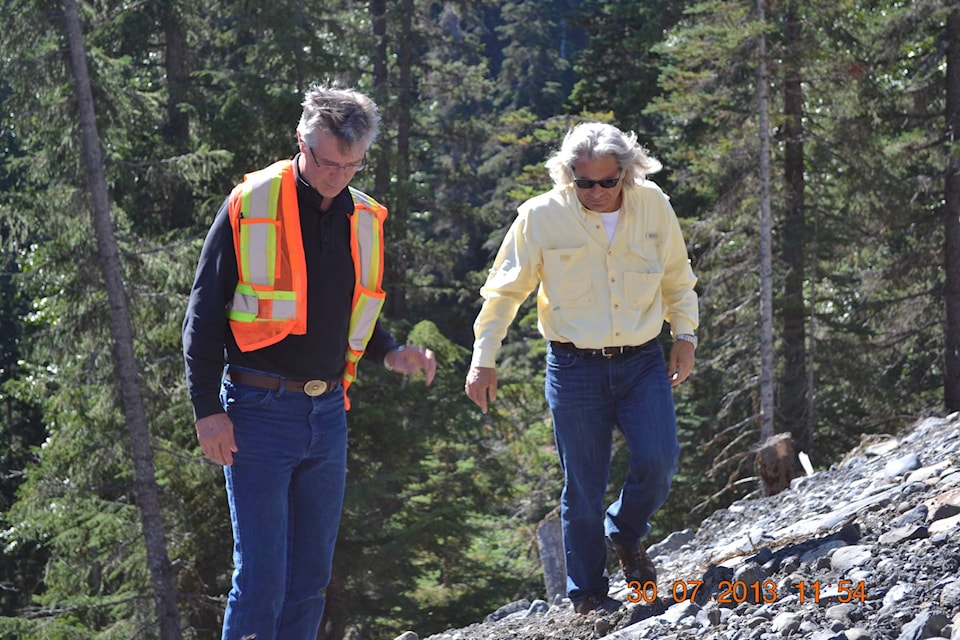Another northwest B.C. first nation is challenging the revenue sharing arrangements between the provincial government and the Tahltan and Nisga’a from Pretivm’s Brucejack gold mine approximately 65 km north of Stewart.
Early this year, the Tsetsaut/Skii km Lax Ha (TSKLH) Nation filed a petition in the B.C. Supreme Court, according to a Jan. 29 press release.
The Tahltan’s agreement gives them up to $7 million in annual revenues while the Nisga’a stand to gain approximately $8 million per year over the estimated 22-year life of the mine, according to press releases issued by the Province when the agreements were signed.
The TSKLH currently receives nothing, but assert their claim to the territory on which the mine is located is stronger than the other two nations.
“The TSKLH Nation is the only First Nation claiming the entire Brucejack project area, and the mine site itself,” the release states. “The Nisga’a Nation has negotiated some Aboriginal rights over territory that includes some of the ancillary infrastructure, but Brucejack is located approximately 200 kilometres from the nearest Nisga’a village. The Tahltan Nation asserts a claim to Aboriginal rights and title to a very limited portion (only 10 kilometres) of Brucejack’s access road, and its asserted territory is otherwise located north of Brucejack.”
Furthermore, TSKLH states the province agrees with them on the strength of their claim.
“The Province has acknowledged that the TSKLH Nation’s claim to Brucejack is stronger than any other First Nation, and consulted the TSKLH Nation at the high end of the consultation spectrum throughout the project’s environmental assessment phase,” the release says.
In the 2015 Brucejack Environmental Assessment Report, the Province does acknowledge the TSKLH “have a moderate to strong prima facie claim to rights, and a weak to moderate prima facie claim to title, in the area potentially affected by the access road which is within the Awijii area.”
In that particular area, the report does state the Tahltan “has a weak prima facie claim to Aboriginal title,” and goes on to say:
“Although this area is understood to have been within the control of the Laxwiiyip (Tahltan) at around 1846, it is also understood that the Laxwiiyip ceded their interests to this area to the TSKLH around 1900.”
However, the report also states: “The Province assesses TSKLH to have a weak prima facie claim to Aboriginal rights and there is no information supporting a prima facie claim of Aboriginal title in the area affected by the transmission line. With respect to the area in proximity to the mine site, the Province could find no ethnohistoric evidence to support any claim to Aboriginal rights or title.”
READ MORE:
Ventures loses Brucejack mine contract
Revenue sharing is not just about rights and title, however. In a letter provided to The Interior �������� by TSKLH dated April 14, 2016, when they were trying to negotiate revenue sharing, Linda Robertson, a manager with what was then the Ministry of Aboriginal Relations and Reconciliation (now Indigenous Relations and Reconciliation) wrote:
“While the Project falls within TSKLH’s asserted territory this alone does not predetermine that the Province will share resource revenues or enter into agreements with TSKLH. The Province considers a range of factors in determining when and how much revenues to share with First Nations, including strength of claims, nature of the entity asserting the claim, degree of impact of an activity, distance to project and population of First Nation community.”
The Indigenous Relations and Reconciliation website assesses the nature of the TSKLH entity as, “incorporated as the Tsetsaut Consultation Society, which is engaged in discussions associated with land and resource use within its asserted traditional territory, outside the B.C. treaty process,” and reports a population of approximately 30.
With respect to the petition on revenue sharing currently before the court, the provincial government has until March 15 to respond.
“We respect the right of the Tsetsaut/Skii km Lax Ha to seek a resolution through the courts as to their disagreement regarding revenue sharing from the Brucejack Gold Mine,” said Kent Karemaker, a spokesperson for the Ministry of Energy, Mines and Petroleum Resources via email. “The Province has not yet filed its response to the legal claim in court and it would be inappropriate to comment further.”
Chad Day, president of the Tahltan Central Government, said they are monitoring the case.
“We’re aware that there is a family that is claiming to have a right to the revenue sharing that the Nisga’a and Tahltan are currently ready to receive from our revenue sharing agreements with the Province,” he said, adding he did not know if the Tahltan would have to get involved.
“At this point it’s up in the air, we just received notification about the case in early January and we will have further updates to share with the public in the near future, but we do have our legal counsel working on it,” he said.
TSKLH says the issue goes beyond revenue sharing from Brucejack.
“In addition to its petition, in May 2018, the TSKLH Nation commenced legal proceedings to advance its Aboriginal rights and title claim to TSKLH traditional territory,” the release stated. “If the TSKLH Nation is successful with its rights and title claim, there will be significant repercussions for many of the economic projects operating within the Golden Triangle, including Brucejack.”
Day also addressed that potential territorial dispute.
“The family that has filed the suit has taken steps to encroach on southern Tahltan territory in the past on other projects and we have our legal counsel ready to respond and work through the proceedings accordingly,” he said.
Pretivm does not believe the case should impact them.
“It really isn’t our concern yet, and it may never be,” said Troy Shultz, a spokesperson for the company. “I think they’re just asking for a cut of what we’re already paying.”



